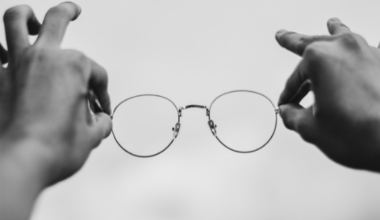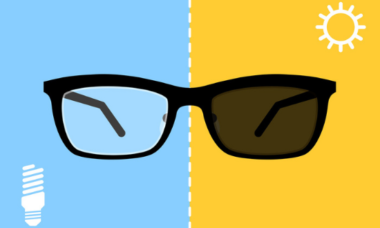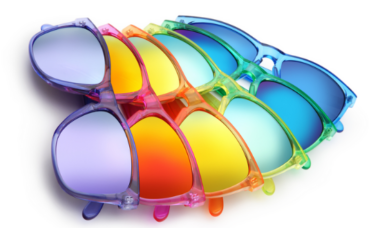Right after the thirties, early aging effects start to appear.
Obviously, our biggest concern is the loosening of skin. What comes to our mind first when aging worries hit upon us are wrinkles at the corner of our eyes and lips. But is that all we should be worried about?
No, right?
What about your teeth? Gums become weak with age and one after the other goes your teeth.
What about your ears? Nerves in-ears began to dry. Many by the age of 70 began to lose the ability to hear well.
What about your eyes? The most overlooked sense organ on your face is the eyes.
Our eyes are the second most complex organ after the brain. The crystalline lens in the eye is about 10mm in diameter, although the size varies upon contraction. It thickens or flattens with help of zonules or Fiber muscles that hold the lens in the eye. This process helps us in seeing objects at a near distance or far distance.
When you reach the age of 40 or more the zonules become weak and incapacitates the lens meaning it loses its elasticity, hence seeing objects at a near distance becomes difficult. This condition is called Presbyopia.
Some people pick up this condition a little before reaching their forties. This condition is called early presbyopia which is mostly the outcome of lifestyle or work habits.
Early presbyopia can be controlled with exercise to activate expand and contract motions of the lens. It would be best suggested to refer to an Eye doctor to monitor progress.
Presbyopia can be corrected with plus power correction also called near addition. This means you’ll need to wear glasses if you need to read or do work that requires near vision.
While celebrities generously giveaway secret tips for glowing skin and beautiful hair after a certain age that is not going to be enough. Anti-aging creams, botox treatments various other options manage loose skin but have you ever seen any celebrity wearing his near glasses at the end of the nose? We hardly get to know their vision impairments. So how do they manage presbyopic conditions? After all, aging is for everyone.
Well, it’s no myth. There are various options to suit your budget and needs.
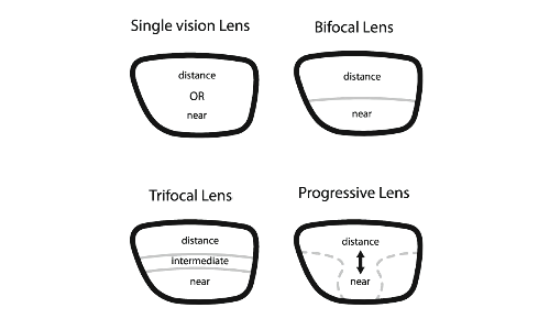
Ready near glasses
These are ready-wear single vision power spectacles for near vision correction. It is a plus power range starting from +0.50D to +3.00D. These are only good enough for reading purposes which is why they are also commonly called reading glasses. They are available at a low-end cost.
Bifocal
Bifocals are designed to facilitate long-hour wearability. It is a partition design in which the upper part is for distance correction and the bottom part is for near correction. This is a very traditional type of spectacle lenses. Many advanced developments followed over a year which we will discuss soon.
Bifocal wearers often find difficulty in climbing or stepping down the stairs. This problem is called the jump effect. The sudden change of power between partitions gives an illusion to the wearer hence makes it less comfortable. Along with that, the focal length to intermediate vision is different. Meaning the power required to see objects at 6/36 distance such as reading billboards is not the same as watching TV. Bifocals do provide the intermediate correction.
D-bifocals
D-bifocals also provide near and distance correction the only difference between bifocals and D-bifocals is the design of lenses. In D-bifocals the near correction is fabricated at the bottom of the lens in the shape of a semi-circle. This gives a larger distance zone and a smaller near zone. Yet even this design could not give the comfort that is required. The intermediate vision was not provided in this type of lens as well.
Trifocals
To meet the need of the hour trifocals were invented. These were designed to have three partitions: distance, intermediate, and near. Without any physical lines, it did give better cosmetic appeal but still could not give the comfort of natural vision. This was because there was no gradation of power. Power change happens like jerks between the partitions causing discomfort. Thus these lenses did not receive acceptance in the market.
Progressive
Progressive was the most advanced development in the field of presbyopia. This lens adapted a corridor design. It required the optician to take pupillary measurements and marking according to company standards to enable customized lenses for the wearers.
The design starts with distance correction reducing power in small steps giving intermediate correction and further adding the near correction towards the end of the lens. It is like a smooth path. Inside of the lens are aberrations that occur while developing the path. Your eyes get a smooth vision throughout the corridor between the aberrations.
There are various models of progressive provided by manufacturers. Broader the corridor, the more comfort, and the higher the price. The manufacturers with their ongoing researches keep developing lenses that provide superior vision to presbyopic patients.
Multifocal contact lenses
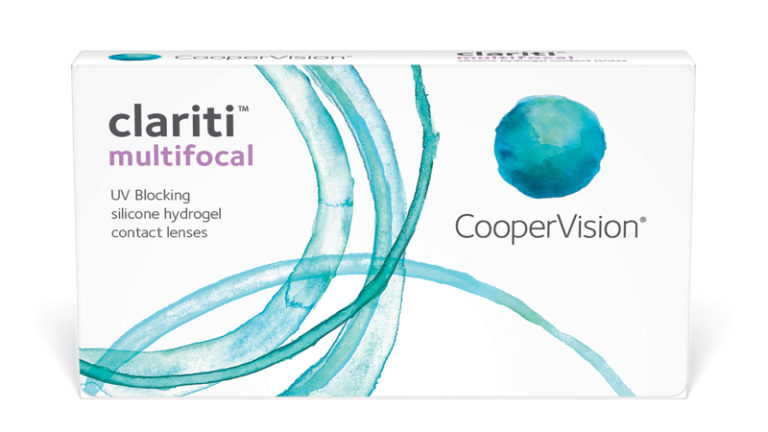
Letting out a real celebrity secret are multifocal contact lenses.
Unlike progressive lenses, multifocal contacts do not follow a corridor design. In fact, there has been a lot of developments in the design of multifocal. It depends upon the manufacturers to what design they develop.
The initial multifocal followed a segmented design. The near vision was weighted at the bottom of the lens so that it remains on the cornea upon eye movement. This was followed by a concentric design in which near and distance powers are in concentric rings within the lens with distance power in the center.
The latest of all is the aspheric design which has distance or near power in the center and gradual transition to other power towards the periphery. It is based on simultaneous vision optics. This design only comes with Clariti Multifocal lenses by Cooper Vision. Bausch and Lomb also offer multifocal lenses with a 3-zone progressive design. You can refer to a Doctor, optometrist, or your nearest dispensing opticians to help you in selecting the right contacts for you.
Multifocals are very handy when your cosmetic look is a priority. You can spend time with your grandkids without having to worry about them breaking your glasses. You can save yourself unnecessary head movements required if wearing progressive spectacle lenses. Although adaption may vary from person to person and your lifestyle needs. That becomes the job of your opticians to suggest the best suit for your needs.
While manufacturers spend millions in research and development, coming years would witness many new developments in the field of Optometry. There have been advancements where digital frames are designed such that the power is controlled by the wearer, unlike progressive or multifocal where power is controlled by lenses. It comes with a touch sensor on the temple of the frame which can manually and automatically adjust to near or distance power. While we wait for this to be an expected premium product to launch in the Indian market we can still benefit from the current options available to us.

